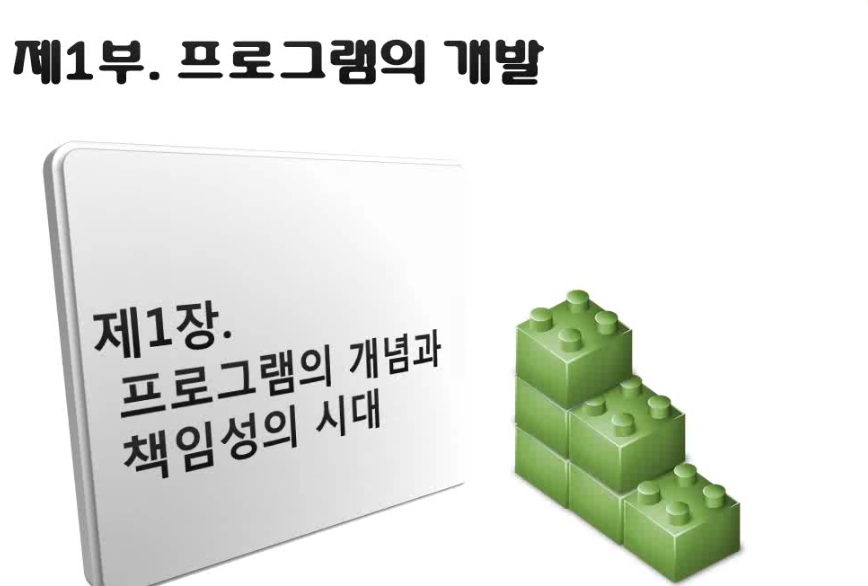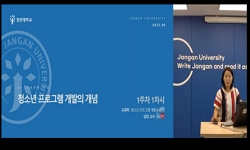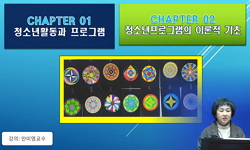This study analyzed each process of demand analysis(A), design(D), development(D), implementation(I) and evaluation(E) of the program to support mathematics learning of students with under-achievement of math in high school. To analyze the demand, a s...
http://chineseinput.net/에서 pinyin(병음)방식으로 중국어를 변환할 수 있습니다.
변환된 중국어를 복사하여 사용하시면 됩니다.
- 中文 을 입력하시려면 zhongwen을 입력하시고 space를누르시면됩니다.
- 北京 을 입력하시려면 beijing을 입력하시고 space를 누르시면 됩니다.

고등학교 수학 학습부진학생을 위한 프로그램 개발 및 적용-ADDIE 모형 적용 사례- = Development and application of the program for students with under-achievement of math in high school - On the case of ADDIE model -
한글로보기https://www.riss.kr/link?id=A105924530
- 저자
- 발행기관
- 학술지명
- 권호사항
-
발행연도
2018
-
작성언어
-
- 주제어
-
KDC
300
-
등재정보
KCI등재
-
자료형태
학술저널
- 발행기관 URL
-
수록면
329-352(24쪽)
-
KCI 피인용횟수
1
- DOI식별코드
- 제공처
- 소장기관
-
0
상세조회 -
0
다운로드
부가정보
다국어 초록 (Multilingual Abstract)
This study analyzed each process of demand analysis(A), design(D), development(D), implementation(I) and evaluation(E) of the program to support mathematics learning of students with under-achievement of math in high school. To analyze the demand, a survey was conducted on 235 high school math teachers and 334 high school students who were under-achieved in mathematics. To design and develope the program, this study linked middle school math to high school math so that the students with poor math learning could easily participate in mathematics learning. The programs developed in this study were implemented in three high schools, where separate classes were organized and run for students with poor math learning. The evaluation of the programs developed in this study was done in two ways. One was a quantitative evaluation conducted by five experts, and the other was a qualitative evaluation conducted through interviews with teachers and students participating in the program. This study found that students with poor mathematics learning were more motivated to learn, started to do mathematics, and encouraged to be confident when using learning materials that included easy problems and detailed solutions that they could solve themselves. From these results, the following three implications can be derived in developing a program to support students who are experiencing poor mathematics learning in high school. First, we should develop learning materials that link middle school mathematics to high school mathematics so that students can supplement middle school mathematics related to high school mathematics. Second, we need to develop learning materials that include detailed solutions to basic examples and include homogeneous problems that can be solved while looking at the basic example’s solution process. Third, we should avoid the challenge of asking students who are under-achieving to respond too openly.
참고문헌 (Reference)
1 김응환, "활동중심 수업이 수학 학습부진아의 정의적 특성에 미치는 영향" 한국학교수학회 9 (9): 209-227, 2006
2 이형주, "협동학습 및 또래교수 프로그램이 수학학습부진학생의 인지적·정의적 영역에 미치는 효과 메타분석" 대한수학교육학회 25 (25): 113-137, 2015
3 심상길, "함수 학습에 나타난 수학 학습부진아의 오류에 대한 사례 연구" 한국수학교육학회 22 (22): 275-288, 2008
4 백순근, "학위논문 작성을 위한 교육연구 및 통계분석" 교육과학사 2004
5 김동일, "학습상담" 학지사 2011
6 이화진, "학습부진아 지도․지원의 실효성 제고를 위한 대안 탐색: 학습부진아 지도․지원 종합 계획(안)을 중심으로" 한국교육과정평가원 2009
7 백병부, "학습부진 극복 여부에 대한 수준별 하반 편성 및 특별보충수업의 효과" 한국교육사회학회 20 (20): 83-110, 2010
8 권혁진, "학습 부진아 수학 클리닉 운영 사례" 한국학교수학회 9 (9): 19-40, 2006
9 김태은, "초․중학교 학습부진학생의 성장 과정에 대한 연구(Ⅰ)" 한국교육과정평가원 2017
10 노원경, "일반고 학습부진학생 지원 방안(Ⅱ): 수학, 영어 교과를 중심으로" 한국교육과정평가원 2017
1 김응환, "활동중심 수업이 수학 학습부진아의 정의적 특성에 미치는 영향" 한국학교수학회 9 (9): 209-227, 2006
2 이형주, "협동학습 및 또래교수 프로그램이 수학학습부진학생의 인지적·정의적 영역에 미치는 효과 메타분석" 대한수학교육학회 25 (25): 113-137, 2015
3 심상길, "함수 학습에 나타난 수학 학습부진아의 오류에 대한 사례 연구" 한국수학교육학회 22 (22): 275-288, 2008
4 백순근, "학위논문 작성을 위한 교육연구 및 통계분석" 교육과학사 2004
5 김동일, "학습상담" 학지사 2011
6 이화진, "학습부진아 지도․지원의 실효성 제고를 위한 대안 탐색: 학습부진아 지도․지원 종합 계획(안)을 중심으로" 한국교육과정평가원 2009
7 백병부, "학습부진 극복 여부에 대한 수준별 하반 편성 및 특별보충수업의 효과" 한국교육사회학회 20 (20): 83-110, 2010
8 권혁진, "학습 부진아 수학 클리닉 운영 사례" 한국학교수학회 9 (9): 19-40, 2006
9 김태은, "초․중학교 학습부진학생의 성장 과정에 대한 연구(Ⅰ)" 한국교육과정평가원 2017
10 노원경, "일반고 학습부진학생 지원 방안(Ⅱ): 수학, 영어 교과를 중심으로" 한국교육과정평가원 2017
11 노원경, "일반고 학습부진학생 지원 방안(Ⅰ): 수학, 영어 교과를 중심으로" 한국교육과정평가원 2016
12 김사환, "일반계 고등학생의 수학 교과에대한 기본 학습 부진 요인 분석" 14 : 327-348, 2002
13 허난, "예비수학교사교육에서의 플립드 러닝(Flipped Learning) 교수·학습 설계에 관한 연구" 한국수학교육학회 29 (29): 197-214, 2015
14 교육부, "수학과 교육과정. 교육과학기술부 고시 제 2015-74호. [별책 8]"
15 최계현, "상호또래교수 활동이 고등학생들의 수학교과에 대한 정의적 특성에 미치는 영향" 한국수학교육학회 52 (52): 423-442, 2013
16 고상숙, "비심리적 처치프로그램에 의한 고등학생 수학불안집단 간의 뇌파 연구" 한국수학교육학회 55 (55): 383-396, 2016
17 박송이, "마인드 맵을 활용한 학습부진아의 지도가 수학학습 능력 및 태도에 미치는 영향" 한국학교수학회 12 (12): 243-260, 2009
18 시기자, "국가수준 학업성취도 평가 종단자료에 기반한 학업성취도 변화 추이 분석" 한국교육과정평가원 2015
19 이인호, "국가수준 학업성취도 평가 결과 분석 -수학-" 한국교육과정평가원 2016
20 Gustafson, K. L., "Trends and issues in instructional design and technology" 16-25, 2002
21 Patton, M. Q., "Qualitative research" John Wiley & Sons, Ltd 2005
22 Waltz, C. F., "Measurement in nursing and health research" Springer publishing company 2010
23 Seidman, I., "Interviewing as qualitative research: A guide for researchers in education and the social sciences" Teachers college press 2013
24 Branch, R. M., "Instructional design : The ADDIE approach(Vol. 722)" Springer Science &Business Media 2009
25 문혜령, "GSP를 활용한 삼각함수에서 학습부진아의 수학화 과정에 관한 사례연구" 한국수학교육학회 49 (49): 353-373, 2010
동일학술지(권/호) 다른 논문
-
다양한 형태의 등비급수 과제들에 대한 학생들의 생각과 표현에 관한 사례연구
- 한국수학교육학회
- 이동근 ( Lee Dong Gun )
- 2018
- KCI등재
-
- 한국수학교육학회
- 정혜윤 ( Jung Hye Yun )
- 2018
- KCI등재
-
- 한국수학교육학회
- ( Suh Heejoo )
- 2018
- KCI등재
-
‘닫힌 상자’에서의 복원추출에 의한 모비율 추측 활동수업 개발 및 적용
- 한국수학교육학회
- 이기돈 ( Lee Gi Don )
- 2018
- KCI등재
분석정보
인용정보 인용지수 설명보기
학술지 이력
| 연월일 | 이력구분 | 이력상세 | 등재구분 |
|---|---|---|---|
| 2026 | 평가예정 | 재인증평가 신청대상 (재인증) | |
| 2020-01-01 | 평가 | 등재학술지 유지 (재인증) |  |
| 2017-01-01 | 평가 | 등재학술지 유지 (계속평가) |  |
| 2013-01-01 | 평가 | 등재학술지 유지 (등재유지) |  |
| 2010-01-01 | 평가 | 등재학술지 유지 (등재유지) |  |
| 2008-01-01 | 평가 | 등재학술지 유지 (등재유지) |  |
| 2006-01-01 | 평가 | 등재학술지 유지 (등재유지) |  |
| 2004-01-01 | 평가 | 등재학술지 유지 (등재유지) |  |
| 2001-07-01 | 평가 | 등재학술지 선정 (등재후보2차) |  |
| 1999-01-01 | 평가 | 등재후보학술지 선정 (신규평가) |  |
학술지 인용정보
| 기준연도 | WOS-KCI 통합IF(2년) | KCIF(2년) | KCIF(3년) |
|---|---|---|---|
| 2016 | 0.82 | 0.82 | 0.93 |
| KCIF(4년) | KCIF(5년) | 중심성지수(3년) | 즉시성지수 |
| 0.95 | 0.96 | 1.191 | 0.31 |




 ScienceON
ScienceON KISS
KISS







